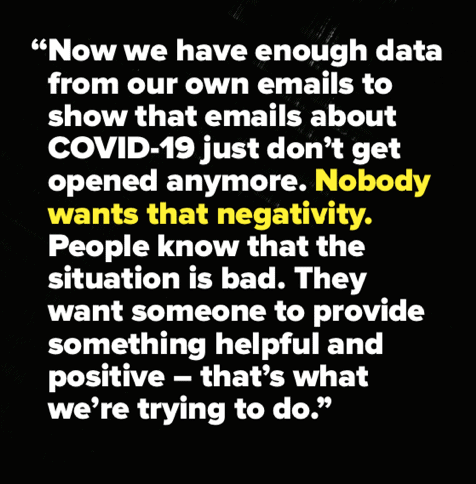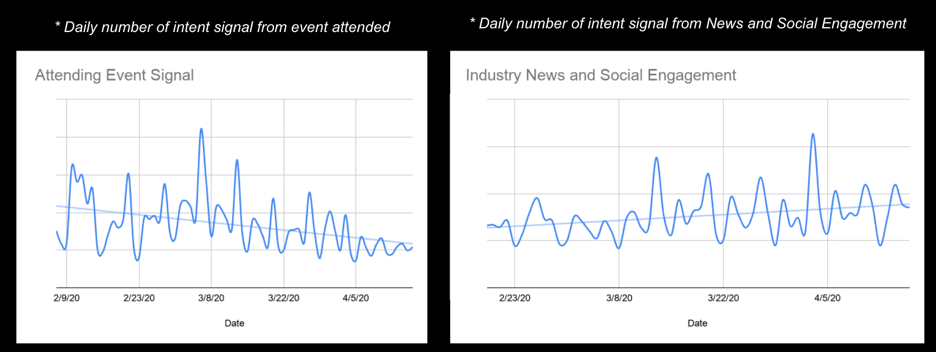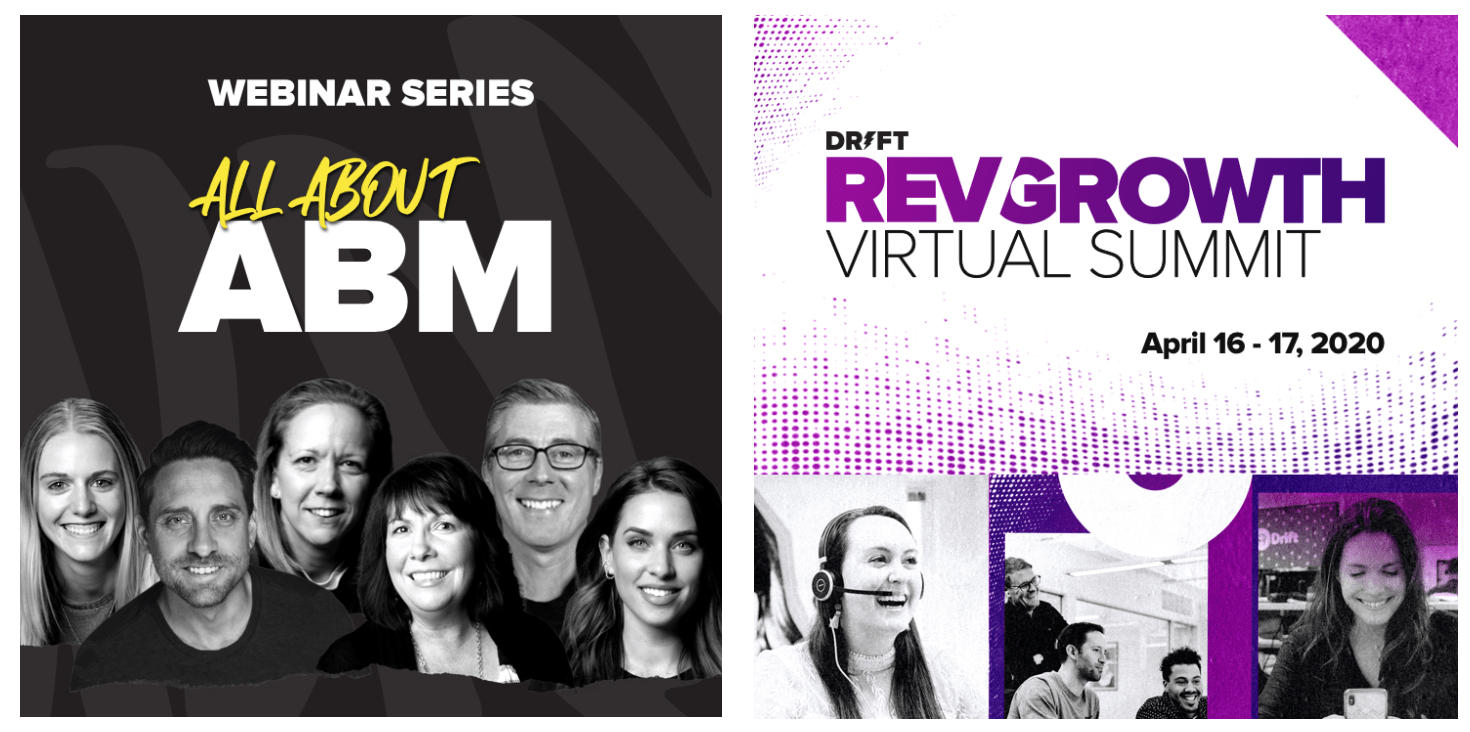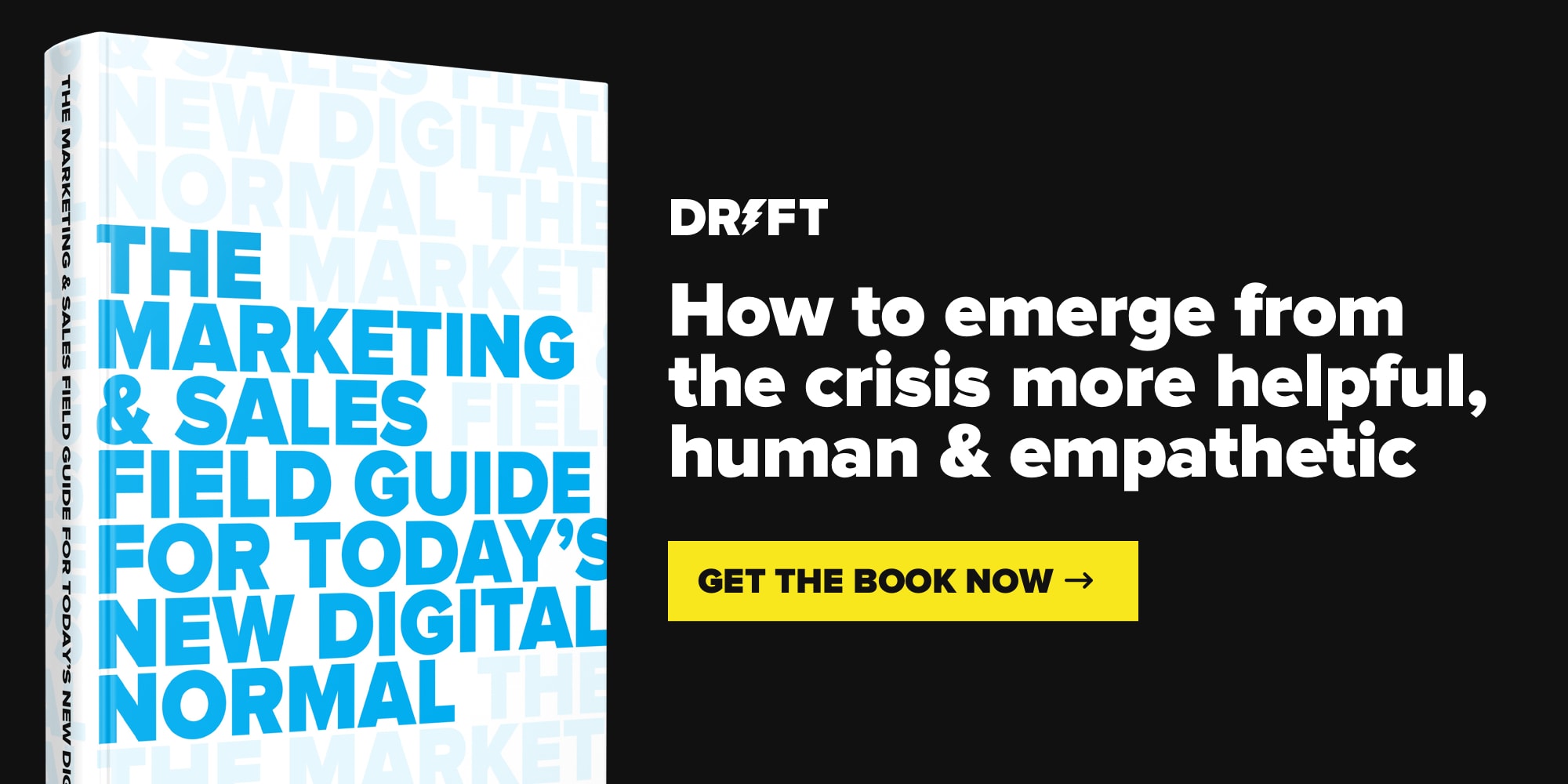
As we move into the summer, more and more communities are starting to enter a new phase of this pandemic: reopening.
What that looks like depends on where in the world you are. But the uncertainty remains.
As a marketing leader, I learned some valuable lessons over these last few months. The most important: how to transition our marketing team during a crisis – to not just survive, but thrive.
To share what I learned, Drift hosted a webinar on how marketing teams can navigate, pivot, and succeed during the pandemic.
Depending on your industry, company size, resources, etc., this pivot will look different.
But the companies that are succeeding do have a few things in common:
First, they’re throwing away the “always follow your gut” mentality and leading with data. Next, they’re doubling down on digital marketing strategies that convert. Finally, they’re investing in tools and processes that improve their long-term funnel strategy and customer experience.
See how you can do the same ?
1. Make Data-Driven Marketing Decisions
A data-driven approach to marketing is about using data that is actionable. Specifically, using data to interpret, anticipate, and lead through innovation.
Gong’s marketing strategy is a perfect example of this. Gong uses data from its own calls to guide their messaging and marketing strategy.
In Drift’s The Marketing & Sales Field Guide for Today’s New Digital Normal, Gong CMO Udi Ledergor walked through how his team is using data to keep their message timely and their strategy sharp ?

Here’s what data you should look at to better position and enhance your marketing and GTM strategy:
- Intent data insights: Use intent data to understand what is happening outside of your internal marketing activities. We did this at Drift and used the insights to shift our in-person events into virtual summits and webinars.

- Campaign insights: We also shifted our strategy to help more buyers adjust to the next normal based on campaign insights. For example:
- Drift Video usage surged starting March 8 among our customers. Seeing what a positive impact this had, we realized how helpful this would be for kids and teachers at home. As a result, we ran a free video sign-up campaign for students, teachers, and nonprofits.
- We increased investments in digital marketing and paid social as more people turned to communicate online.
- CRM & industry insights: We saw an increase in conversations – from industries outside our typical audience – spike (healthcare, pharmaceuticals, real estate, etc.). Opportunities in these industries also increased by 57% March-April. Using Drift Audiences, we were able to overlay website traffic with conversation data, and then group accounts by different firmographic data such as employee size, industry, and location. This was useful for tracking account coverage and catering messaging so it was relevant to these newly interested industries.
- Communication insights: Similar to Gong, we learned a ton about what our customers and buyers needed based on conversations. But this tactic shouldn’t just be reserved for this crisis. Analyzing the conversations you’re having is key to almost everything you do in marketing – from messaging to outreach to strategy.
Once you have the insights, you need to run an audit. (Not the sexy marketing pivot you were looking for, I know.)
VP of Brand and Digital Marketing at Acquia, Eric Williamson, suggests conducting two different “marketing audits.”
- First, a messaging audit to ensure your content is empathetic and relevant.
- The second, an industry audit. Not all of your buyers are ready to bounce back – and you need to be sensitive to that.
Here’s what this audit looked like for Acquia ?
“We looked at all of our ads, email subject lines, and so on, and we removed or adjusted anything that could come off as insensitive during this time. Then we did an industry audit using some of the information coming from financial analysts. We identified three or four industries – travel, hospitality, energy – that aren’t going to be spending any money until 2021 at the earliest. We pushed pause on our media targeting for the industries we know are not able to be in the market right now.”
2. Invest More in Digital Marketing that Drives Pipeline
Drift, like many other businesses right now, is relying heavily on digital marketing to drive pipeline wins.
Before the pandemic, we would never have thought of doing a virtual event on the scale of RevGrowth. But circumstance forced us to experiment, and I’m glad we did.
It was a big bet, but we learned that online events can work for us – and work well. Going forward, we’ll probably always include a virtual element for our in-person events.
I mention all this because many marketers get stuck on the wins and channels they know.
But the pandemic took some key channels away from us. It reminded marketers that experimenting is the key to innovation ?

The pandemic also hurried a trend that was coming regardless: digital transformation.
If there is any time to experiment with digital offerings, it’s now. What channels aren’t working for you? How can you use the content you had planned for these channels differently?
Take a look at some digital channels and start a conversation with your team on ways to innovate:
- Search Engine Optimization (SEO)
- Search Engine Marketing (SEM)
- Email marketing
- Video
- Website Conversion Optimization
- Content Marketing
- Advertising
- Webinars
3. Fix Your Funnel
✅You’ve done the work to lead with data and invest in new digital channels.
✅You’re reaching the right people and they’re engaging with your content.
Here’s the problem: None of it matters if your B2B marketing funnel isn’t optimized.
The B2B marketing funnel of the future is all about cutting out the middleman and starting meaningful conversations in real-time. It also means designing websites that are personalized for your customers and buyers.
Meaning this funnel ?

…isn’t going to cut it anymore.
This idea of abandoning the old ways is scary for sure. How will this even look for your business?
The better question is: How much do you have to lose by not fixing what’s broken now?
If you want to understand the impact antiqued forms and funnels have on your bottom line, check out our conversational marketing calculator.
Final Thoughts
These few months have taught us so much about the role of marketing, and how strong our teams can be during challenging times. Who can pivot? Who can pick themselves up? Who can lead with empathy and deliver results?
This time has also shown marketers the value of experimenting – and being unafraid to fail and learn from those failures. No one has a silver bullet or the only answer on how to thrive today. That answer can only be revealed experiment by experiment.
To recap, here are the three steps marketers should take to succeed in the next normal – and help propel their business into the future:
- Make marketing decisions based on data.
- Double down on digital marketing plays and experiment more than ever before.
- Take a long, hard look at your funnel and fix what’s broken.








